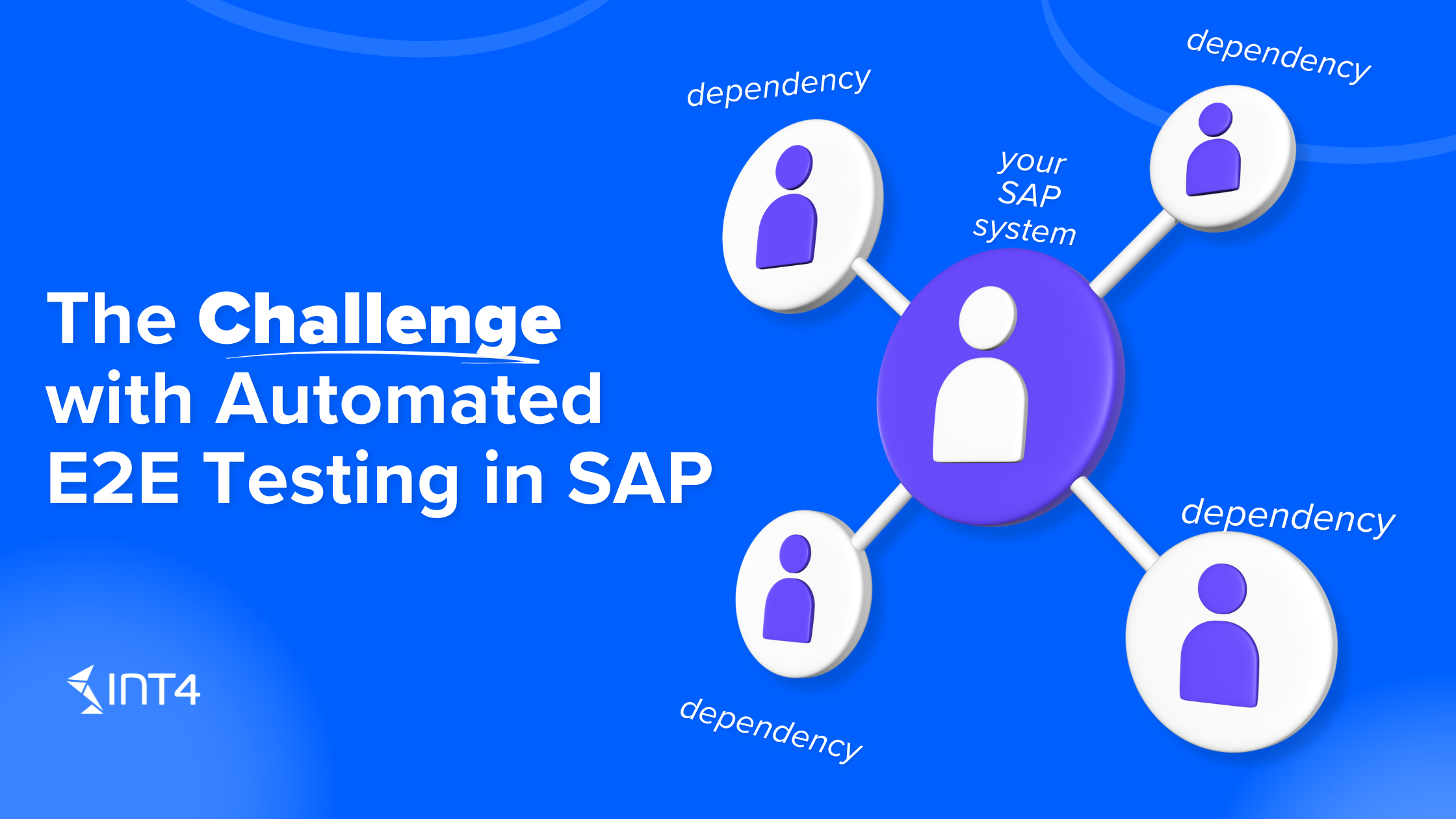Automated E2E Testing in SAP – is it really a dream come true?

What is Automated E2E Testing in SAP?
Automated E2E Testing is supposed to be a way to automatically test your business processes from one end to the other to make sure that they work from start to finish in an expected way. But in reality, this approach seems to be challenging to implement – especially for enterprise customers.
The following article was written based on the conversation between Michał Ibrom and Michał Krawczyk during one of episodes of the “Navigating SAP API Testing” show:
Dive deep into the topic of challenges regarding Automated E2E Testing in SAP by reading the article below. And let us start off with this – testing your integrations shouldn’t be an afterthought. Why is this so important? Well…
Your most critical business processes are running through integration
The choice of how you’re going to test integrations is vital. Because the processes that are most important to your business are run through integration.
Order to cash and source to pay are just two examples of those. But in general, it’s highly probable that your company sells, buys and ships through integration. And if selling, buying or shipping doesn’t work, you’re in big trouble.
What’s the vision of Automated E2E Testing and how is it being sold to enterprise customers?
Automated E2E Testing is often described as the best possible testing approach – because if it’s end to end you are supposed to have your process verified with the real data all the way through. This is supposed to give companies a way of finding if their business processes are working in their entirety.
But that is of course just a theory. In practice – it’s hard to achieve, time consuming and might need a lot of additional resources. So what are the challenges that make this approach less viable?
So what’s the main challenge with Automated E2E Testing?
The biggest challenge is the dependency on non-SAP, third party systems, that are outside of your control.
In theory, the goal of end-to-end testing is to test the whole scenario – from start until the end. With all the systems that are involved. But you do not control every system that might be involved in a specific process that you want to test. And based on the experience of Michał Ibrom, this is the main challenge in this type of testing.
You may not have access to the external system. There might be connection issues. Or maybe the resources from the external applications are not available at the specific time when you’d like to perform your test. There are a lot of dependencies that can be attributed to the External Dependencies.
And the more complex your project is, the bigger is the challenge of managing the external dependencies for the purpose of testing. This point is extremely important, because…
SAP Landscapes are getting bigger and more complex
We’re not talking about one or two connected systems. The scale is much greater.
When we’re talking about enterprise companies with complex supply chains (e.g. from Automotive, Retail, Manufacturing or FMCG industries), we’re usually talking about hundreds of external systems and different external applications.
Diving a little deeper – some of those test systems from the non-SAP applications may not have a system corresponding to SAP.
So as you can imagine, the effort of coordinating 100+ systems at the exact time when you want to conduct your testing may not be a viable approach.
Third party systems are outside of your control – but what does that mean from the testing perspective?
Let’s say that in order to assure business continuity, you’d like to test if the full process works as it’s intended. But some of the systems that these processes are running through, are not in your company’s control. For example – the system of one of your business partners.
This means that in most cases, you might not be able to fully automate the testing of this business process – since this would need involvement from their human resources. But please keep in mind, that despite all of the challenges above, you can’t just stop doing E2E tests all together – as they are an important way to ensure that your environment is working correctly.
So if Automated E2E testing isn’t a realistic approach, you might be wondering…
The solution – Simplified E2E Testing
If you still want to test end-to-end, but you also want to mitigate the challenges correlated with having hundreds of connected systems, you might be interested in a concept called “Simplified E2E Testing”.
Simplified end-to-end testing means that instead of running the tests with all the external sources involved, you’re trying to decouple your SAP system from them by simulating all the third party systems.
Simulate thirds party systems to simplify your projects
During your projects/programs it is usually only your system that is changing. Your partners (such as the warehousing system for example) are in most cases just running their business as they did before. So imagine, that for example, instead of contacting your EDI partners, you could just simulate their system and send yourself a test message based on historical messages that you have already received from them. That’s exactly what’s possible in the SAP environments with Int4 Suite.
Learn more about how you can take advantage of modern SAP testing solutions such as Service Virtualization and Automated API Testing with the video that explains these concept in a simple way:
Book a discovery session today!
If you want to see the Int4 Suite in action and learn more about how to utilize the Simplified E2E Testing, simply click the button below and schedule a discovery session with our team.
Popular tags
ABAP int4 INT4 IFTT Int4Interview S/4HANA SAP AIF SAP CPI sap integration



